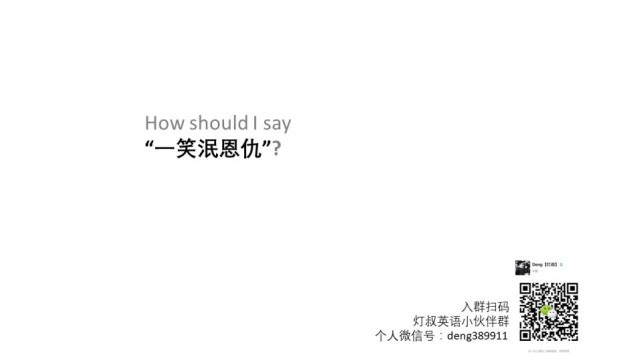(双语)陈冯富珍总干事在中医现代化国际会议上的主旨演讲 2
作者:英文巴士
来源:英文巴士
2016-11-16 09:52
Ladies and gentlemen,
女士们,先生们,
Traditional Chinese medicine has many critics. Their criticisms must also be addressed if traditional Chinese medicine is to perform a legitimate role as an integrated part of a health system.
中医药有很多批评者。如果要使其作为卫生系统的一个完整部分来发挥合法作用就必须面对他们的批评意见。
Some critics dismiss the entirety of this ancient art as nothing but pseudoscience, or “snake oil” medicine. They argue that the differences between East and West can never be reconciled.
有些批评者全面驳斥这种古代艺术,认为只不过是伪科学或“蛇油”医学,并认为东西方的分歧永远不能调和。
They point out that few well-designed studies, following the gold standard of randomized controlled clinical trials, have demonstrated efficacy over placebos. They point to a lack of plausible and proven biological mechanisms through which traditional remedies exert their effects.
他们指出,根据随机对照临床试验的黄金标准精心设计的研究很少显示出比安慰剂更好的功效。他们指出,没有已得到证明的合理生物学机制能说明传统疗法如何发挥作用。
They point to the difficulty of standardized quality control, especially since the chemical composition of a plant species can vary according to where it was grown and in what type of soil, and when and how it was harvested.
他们指出很难实行标准化质量控制,尤其因为植物物种的化学成分可能根据其生长的地方和土壤类型,以及收获的时间和方式而变化。
The Western approach to testing is to isolate the active ingredients and test them one by one.
西医的检测方法是分离活性成分并逐一进行检测。
This, say proponents of traditional Chinese medicine, is part of the problem. It is not a single chemical responsible for the effect, but rather how multiple ingredients work in concert.
中医药的支持者指出这是问题的一部分。产生效果的不是一种单一的化学品,而是多种成分协同发挥作用。
The Western approach to testing also denies the strong cultural and psychological component that is an integral part of the art of traditional medicine. Looking at individual chemicals is reductionist. It is like expecting a tree to grow without its roots.
西医的检测方法也否认了强大的文化和心理因素,而这是传统医学艺术的一个必要组成部分。单独查看每种化学品是简单化的做法,就像期望一棵树在没有根的情况下生长。
As proponents note, the scientific method was not designed to accurately evaluate the full human experience that occurs when traditional medicine is delivered by skilled, experienced, and trusted practitioners in its cultural and historical homes.
正如支持者们所指出的那样,当传统医学在其文化和历史发源地由熟练、经验丰富和值得信赖的从业者实施时所产生的人类体验是无法用科学方法进行准确和全面评价的。
Controlled clinical trials can evaluate the intervention or the herbal product, but not the full experience.
对照临床试验可以评价干预措施或草药产品,但不能评价全面的体验。
Moreover, complaints of pain, anxiety, and stress nearly always have a subjective dimension. The placebo effect is a well-documented scientific phenomenon.
此外,对疼痛、焦虑和压力的抱怨几乎总是带有某种主观性。安慰剂效应是一种有大量记载的科学现象。
As Nobel laureate Elizabeth Blackburn reminds both sides of the debate: “We tend to forget how powerful an organ the brain is in human biology.” Scientific research on the physiological effects of mental stress confirms the validity of that reminder.
诺贝尔奖获得者伊丽莎白·布莱克本这样提醒辩论双方:“我们往往会忘记在人类生物学中大脑是多么强大的器官。”关于精神压力的生理效应的科学研究证实这一提醒是正确的。
Evidence is mounting that diet, exercise, no tobacco, limited alcohol, and stress reduction can do a better job of preventing or delaying the onset of heart disease than most drugs and surgical procedures.
越来越多的证据表明,饮食、运动、戒烟、限制酒精和减压比大多数药物和外科手术能更有效地预防或延迟心脏病发作。
Here, traditional Chinese medicine excels. It pioneered interventions like healthy and balanced diets, exercise, herbal remedies, and ways to reduce everyday stress.
在此,中医药胜出。中医药开拓了一系列干预措施,如健康和平衡的饮食,运动,草药以及减少日常压力的种种方法等。
Countries, like Singapore, aiming to integrate the best from traditional and modern medicine would do well to look not only at the many differences between traditional and modern medicine. Instead, they should look at those areas where both converge to help tackle the unique health challenges of the 21st century.
像新加坡这样力求整合传统医学和现代医学之精华的国家最好不要将目光放在这两种方法的诸多不同之处上。相反,应当看到两者的共同之处,以帮助应对21世纪的独特卫生挑战。
The fact that the 11th revision of the International Classification of Diseases, which is overseen by WHO, contains a chapter on traditional medicine is significant.
由世卫组织监督的《国际疾病分类》第十一次修订版包含了关于传统医学的一章,这具有重要意义。
The chapter sets out diagnostic categories based on traditional medicine conditions which originated in ancient China and are now commonly used in China, Japan, the Republic of Korea, and Singapore.
这一章根据起源于中国古代,现常用于中国,日本,韩国和新加坡的传统医学用法列出了诊断类别。
Particular attention is being given to testing of the chapter in integrated health care settings in target countries where both traditional and Western medicine are practiced.
眼下要特别关注在传统医学和西医并用的目标国家的综合卫生保健机构中检验这个章节。
This innovation also bodes well for the modernization of traditional Chinese medicine as a contribution to universal health coverage that can be sustained, despite rising health care costs.
这项革新也有利于中医药现代化,从而促进实现全民健康覆盖,尽管这会使费用不断升高,但却能够持续。
Thank you.
谢谢大家。











